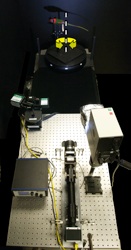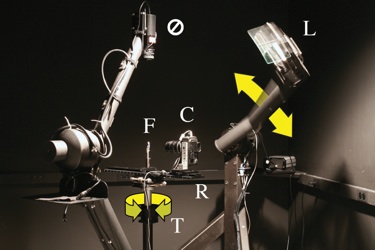Abstract
Avian organisms have evolved plumage of astounding beauty and diversity, including brilliant color and dramatic pattern. Plumage is fundamental to how birds interact with their world; the signaling function of plumage plays a role in an organism’s social interaction and is a determining factor in a organism’s overall visual identity. The organization of modified plumage structure over the surface of the bird produces dramatic variation in appearance both within and between species. Previous case studies have established the vast morphological modifications of individual, specialized feathers, their placement on the body, and the millimeter-scale topography generated by the shape and orientation of feather sub-structures. We study plumage morphology and reflectance to explain its potential function in avian behavior, its development and evolution. We propose that a change in the form and orientation of a feather, and in turn its sub-structures, changes its interaction with light and thus alters appearance. We began our investigations by asking: for every specific component of the modified structure, is there a corresponding signal function and can we identify and measure the signal? In this talk we will discuss two systems of non-destructive tools and techniques we have developed to study and measure plumage morphology and its reflectance from the organismal- to millimeter-scale; the first captures images with high spatial and high spectral resolution and corresponding organismal-scale geometries, while the second obtains high spatial and high directional resolution and millimeter-scale geometries. We will show how plumage morphology at different structural scales influences change in the spectral and directional components of the reflectance over the surface of the organism. We will also suggest the research and archival potential of the large digital data sets acquired in the course of our studies.
Acknowledgements
Cornell Project: Dr. Steve Marschner, Dr. Ellis Loew; Mark Riccio, Cornell MicroCT Facility; Cornell University Museum of Vertebrates; Dr. Don Greenberg, Dr. Jaroslav Krivanek, Dr. Jon Moon, Edgar Velazquez-Armendariz, and Wenzel Jakob. Kalliope Stournaras (University Freiburg).
Yale Project: Dr. Richard Prum, Dr. Holly Rushmeier, Dr. Min Kim; Patrick Paczkowski; Dr. Kristof Zyskowski, Yale Peabody Museum of Natural History; also Teresa Feo, Jacob Musser.


